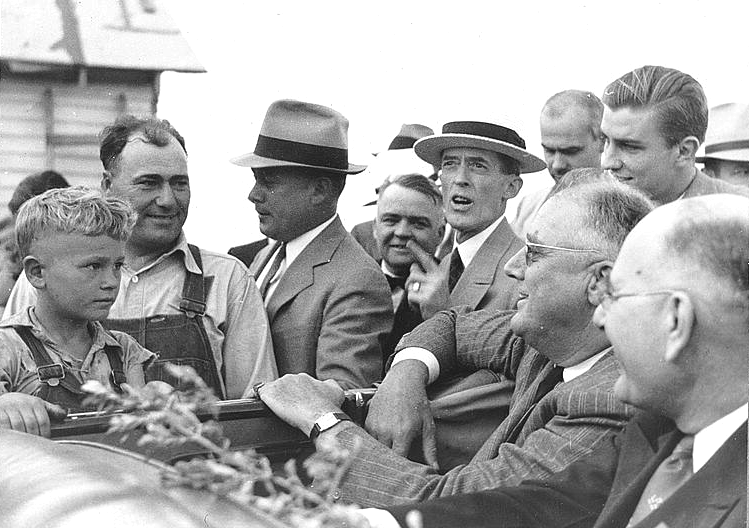During the 1930s, many measures were undertaken to relieve the direct impacts of droughts and to reduce the region’s vulnerability to the dry conditions. Many of these measures were initiated by the federal government, a relatively new practice. Before the 1930s drought, federal aid had generally been withheld in emergency situations in favor of individual and self-reliant approaches. This began to change with the development of the Great Depression in the late 1920s and the 1933 inauguration of President Franklin Delano Roosevelt. The depression helped “soften deep-rooted, hard-line attitudes of free enterprise, individualism, and the passive role of the government”, thus paving the way for Roosevelt’s New Deal programs, which in turn provided a framework for drought relief programs for the Great Plains (Warrick, 1980).
Warrick et al. (1975) describe these drought relief programs, which are credited with saving many livelihoods throughout the drought periods. The programs had a variety of goals, all of which were aimed at the reduction of drought impacts and vulnerability:
- Providing emergency supplies, cash, and livestock feed and transport to maintain the basic functioning of livelihoods and farms/ranches.
- Establishing health care facilities and supplies to meet emergency medical needs.
- Establishing government-based markets for farm goods, higher tariffs, and loan funds for farm market maintenance and business rehabilitation.
- Providing the supplies, technology, and technical advice necessary to research, implement, and promote appropriate land management strategies.
- Removing dead trees and planting new trees to alleviate psychological stress and create shelter belts.
 President Roosevelt visiting a farmer who received a drought relief grant, Mandan, North Dakota, 1936. Photo by Arthur Rothstein.(Image: Library of Congress, Prints & Photographs Division, FSA-OWI Collection, LC-DIG-fsa8b28231 DLC)
President Roosevelt visiting a farmer who received a drought relief grant, Mandan, North Dakota, 1936. Photo by Arthur Rothstein.(Image: Library of Congress, Prints & Photographs Division, FSA-OWI Collection, LC-DIG-fsa8b28231 DLC)
As important as these programs may have been, the survival of a majority of the families and enterprises undoubtedly rested solely with their perseverance and integrity. Whether they stayed or moved into the drought regions or migrated to other areas in hopes of a better life, families encountered new hardships and obstacles that would require ingenuity, resilience, and humility.
Those who remained in the drought regions were forced to endure severe dust storms and their health effects, diminished incomes, animal infestations, and the physical and emotional stress over their uncertain futures. Humor helped; tales about birds flying backward to keep from getting sand in their eyes, housewives scouring pots and pans by holding them up to keyholes for a sandblasting, and children who had never seen rain were among the favorite stories of Dust Bowl inhabitants. In the end, it was a combination of willpower, stamina, humor, pride, and, above all, optimism that enabled many to survive the Dust Bowl. These qualities are succinctly expressed in the comments of one contemporary Kansan: “We have faith in the future. We are here to stay” (quoted in Hurt, 1981).
The 1930s drought and its associated impacts finally began to abate during spring 1938. By 1941, most areas of the country were receiving near-normal rainfalls. These rains, along with the outbreak of World War II, alleviated many of the domestic economic problems associated with the 1930s. In fact, the new production demands and positive climatic conditions brought the United States into a rapid economic boom.
Even though short-term conditions seemed to be relatively stable, this production growth had some drawbacks. One drawback (described by Hurt, 1981) was that the start of World War II shifted remaining funds and priorities away from drought-related programs. Men were taken off work programs to enter the armed forces and to produce for the war effort. Moreover, items such as gasoline and replacement parts were redirected from federal drought and conservation programs to the war efforts. This meant that conservation programs and research were significantly reduced during this period. Another drawback was that with the return of the rains, many people soon forgot about conservation programs and measures implemented during the 1930s droughts. This led to a return to some of the inappropriate farming and grazing practices that made many regions so vulnerable to drought in the 1930s.